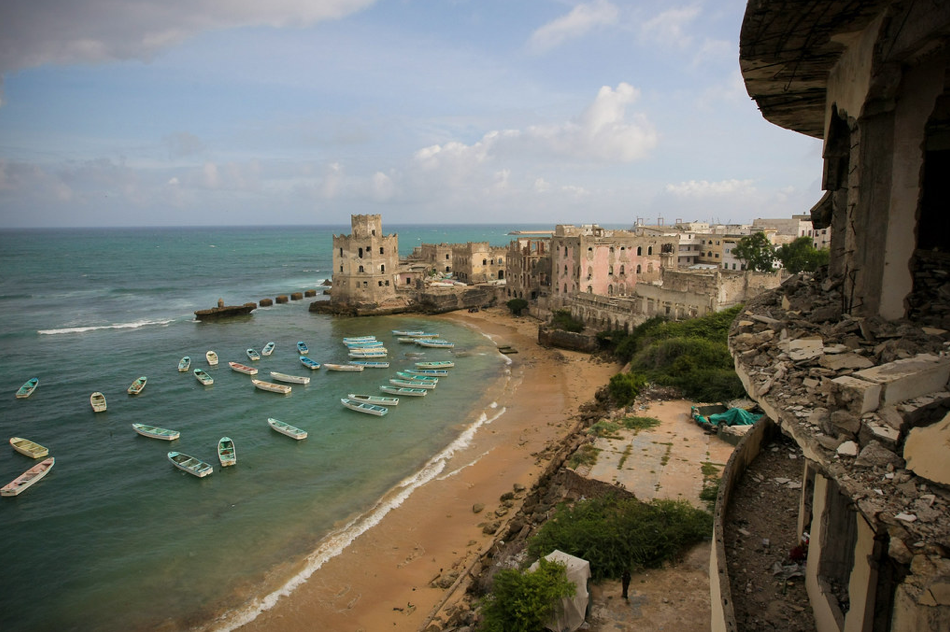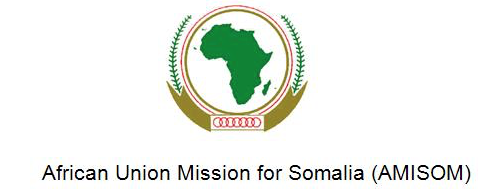Somalia Country Profile – Economy
Last update on: 19 November 2020

AU-UN IST PHOTO / STUART PRICE
From Cia Factbook (Page last updated on October 09, 2020)
Economy – overview:
Despite the lack of effective national governance, Somalia maintains an informal economy largely based on livestock, remittance/money transfer companies, and telecommunications. Somalia’s government lacks the ability to collect domestic revenue and external debt – mostly in arrears – was estimated at about 77% of GDP in 2017.
Agriculture is the most important sector, with livestock normally accounting for about 40% of GDP and more than 50% of export earnings. Nomads and semi-pastoralists, who are dependent upon livestock for their livelihood, make up a large portion of the population. Economic activity is estimated to have increased by 2.4% in 2017 because of growth in the agriculture, construction and telecommunications sector. Somalia’s small industrial sector, based on the processing of agricultural products, has largely been looted and the machinery sold as scrap metal.
In recent years, Somalia’s capital city, Mogadishu, has witnessed the development of the city’s first gas stations, supermarkets, and airline flights to Turkey since the collapse of central authority in 1991. Mogadishu’s main market offers a variety of goods from food to electronic gadgets. Hotels continue to operate and are supported with private-security militias. Formalized economic growth has yet to expand outside of Mogadishu and a few regional capitals, and within the city, security concerns dominate business. Telecommunication firms provide wireless services in most major cities and offer the lowest international call rates on the continent. In the absence of a formal banking sector, money transfer/remittance services have sprouted throughout the country, handling up to $1.6 billion in remittances annually, although international concerns over the money transfers into Somalia continues to threaten these services’ ability to operate in Western nations. In 2017, Somalia elected a new president and collected a record amount of foreign aid and investment, a positive sign for economic recovery.
GDP (official exchange rate): $7.052 billion (2017 est.)
GDP – per capita (PPP):
$NA (2017)
$NA (2016)
$NA (2015)
Population below poverty line: NA
Agriculture – products: bananas, sorghum, corn, coconuts, rice, sugarcane, mangoes, sesame seeds, beans; cattle, sheep, goats; fish
Industries: light industries, including sugar refining, textiles, wireless communication
https://www.cia.gov/library/publications/the-world-factbook/geos/so.html
Other sources about Somalia Economy
Somalia is essentially an agrarian economy. The World Bank’s 2018 report indicated:
“…over the past three decades, Somalia’s livestock and crop subsectors have been buffeted by an increasingly fragile and degraded natural environment and more frequent and severe cycles of drought and floods. These factors, combined with insecurity, weak government institutions, and a deterioration of flood control, irrigation, and transport infrastructure in the south-central regions, have led to a severe decrease in crop yields…Livestock and crops remain the main sources of economic activity, employment, and exports in Somalia. Agriculture’s share of gross domestic product (GDP) is approximately 75% and represents 93% of total exports, mostly linked to robust livestock exports in the recent pre-drought years. Sesame is now the largest export among crops, followed by dried lemon, in the wake of the total collapse of banana exports. Despite Somalia’s rich fish stocks, coastal fishing has remained small-scale and artisanal while foreign commercial vessels have enjoyed both legal and illegal harvesting offshore.” [i]
Somalia has been able to maintain a robust informal economy where private sector enterprises, albeit small, have had notable successes. Studies on the Somali economy have demonstrated that remittances from overseas-based Somalis (Somali Diaspora) account for a significant source of revenue for Somalia, with perhaps as much as 40% of the population relying on them for income. However, the lack of consistent and secure banking structures force the population to use other banking methods, such as “hawalas,” which are not recognized internationally.
| Hawalas “are informal nationwide arrangements known as money service businesses (MSBs). In 2013, UK’s Barclays Bank cut ties with Somalia’s MSBs in reaction to (accusations of funding terrorism)…Most other Western banks did the same either before or right after Barclays. These actions have made it very difficult for Somalians to receive funds, especially in a legal way.” |
[i] The World Bank. (2018). Agriculture Remains Key to Somalia’s Economic Growth and Poverty Reduction. Based on data set released 2018-03-28 and accessed 2020-09-23 at https://www.worldbank.org/en/news/press-release/2018/03/28/agriculture-remains-key-to-somalias-economic-growth-and-poverty-reduction. Terms of use https://www.worldbank.org/en/about/legal/terms-and-conditions.
Other sources:
https://www.worldbank.org/en/country/somalia
These products are the results of academic research and intended for general information and awareness only. They include the best information publicly available at the time of publication. Routine efforts are made to update the materials; however, readers are encouraged to check the specific mission site at https://amisom-au.org.
Index
Executive Summary / Current Political and Security Dynamics / Recent Situation Updates
Central African Republic Country Profile
Government/Politics / Geography / Military&Security / Economy / Social / Information / Infrastructure
African Union Mission in Somalia (AMISOM)
Senior Leaders of the Mission / Mandate / Strength / Deployment of Forces / Casualties / Mission’s Political Activities / Background / Timeline


